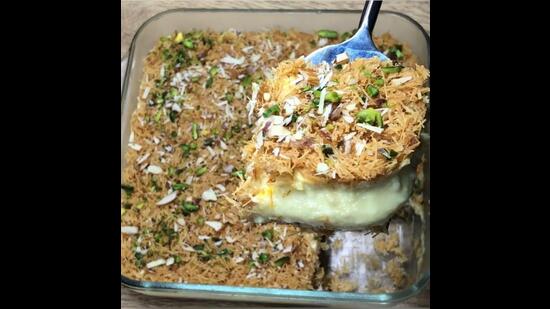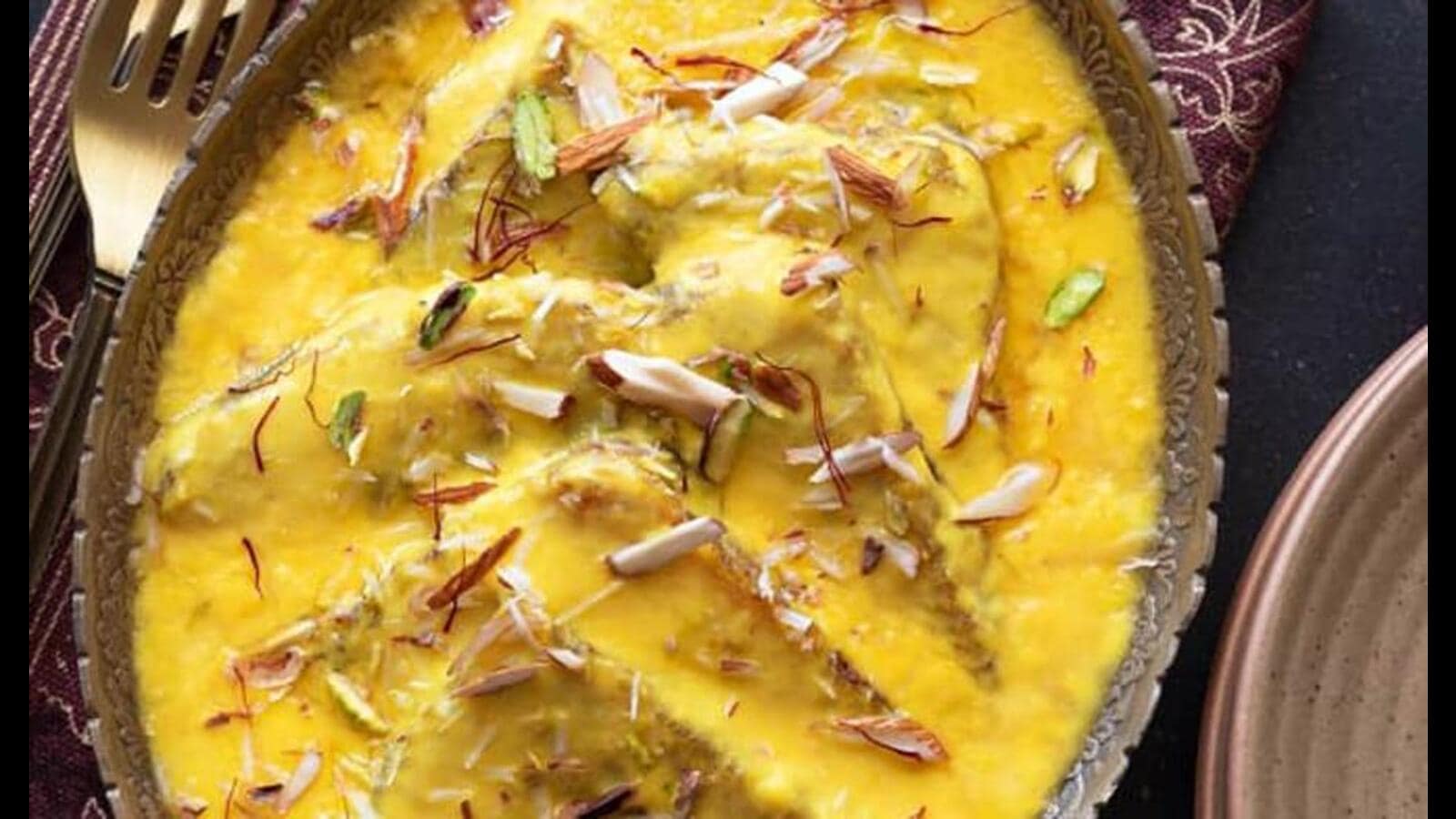[ad_1]
The month-long period of Ramzan will conclude with Eid al-Fitr tomorrow. The holy month holds immense significance in the Islamic faith and its cheer is hard to miss for anyone, especially foodies. The festivities only get a notch higher on Eid al-Fitr, which is also called meethi Eid, for the variety of sweet dishes relished on this day to mark the end of a month of fasting.
“Right from sheer khurma, seviyan muzaffar, kheer, phirni, shahi tukda, balushahi, to falooda, anjeer ka halwa or khajoor ka halwa, a lavish spread is prepared on the day. Seviyan and its variations, in fact, hold a special relevance and there is even a story behind it. It is believed that during Eid celebrations, emperor Shah Jahan ordered a special sunset coloured varq (edible coating) to go along with their offering of seviyan. It was a tradition that continued till the time of emperor Bahadur Shah Zafar, who is said to have hand rolled his own seviyan from soft wheat dough during the fasting days. Since then, this dish has travelled around the world,” says Anand Panwar, executive pastry chef, Roseate Hotels & Resorts. Mango seviyan, coconut seviyan and kimami seviyan are some of the variations.
While making them at home, one must follow certain tips for the best flavours. “Seviyan shouldn’t be overcooked as it loses the texture and crunch that it should ideally have. The sugar content should be balanced as high sugar can rob the dish of its flavour. Some people add a lot of nuts in the dessert to make it rich, which changes the taste, and as a result, the real essence is lost,” says Panwar.

For chef Sadaf Hussain, sheer khurma is a classic Eid dish: “There are memories associated with khurma. This is the first item we eat after offering namaz on Eid. It’s essentially seviyan mixed in milk and khoya. It has a very rich, rustic, robust and desi flavour to it. We must use Banarasi seviyan for the best flavours. They are thin, light and melt in the mouth. Try adding some kewra water to it for aroma and sweetness.”
As suggested by experts, the desserts should be kept ready one day in advance, or at least the basics should be prepared. “There should be an equal ratio of cold and hot desserts in the meal for the best experience. With Eid tomorrow, I am experimenting with dishes. I had heard about kunafa during my time in the Middle East. The dessert didn’t look appetising at first, but when tasted, the flavours felt out of the world. The simple, delicate and soothing cream cheese wins the heart. It’s made with fine semolina dough, soaked in a sweet syrup, layered with cheese or cream and nuts,” says Madhumita Mohanta, executive chef, The Lalit Great Eastern, Kolkata.
Another favourite on Eid is phirni. When you are making it at home, keep a check on the proportion of milk to rice. “You have to continuously stir the pot so it doesn’t stick to the bottom of the utensil. Likewise, for shahi tukda, you have to see how golden you need the bread to be, how high, medium or slow the flame should be for the desired colour, and how hard or consistent the sugar syrup needs to be,” says Zebi Zubair, chef at Knosh, famous for her Banarasi Kimami Seviyan Kheer.

Recipe
Shahi Seviyan
Ingredients
150gm seviyan
1/2 cup cashews – grounded
2 tbsp ghee
1 litre full cream milk
6 tbsp powdered sugar
1 tbsp custard powder
1/2 cup milk powder
Kesar- few strands
Method:
Add 2tbsp ghee on a pan, and roast seviyan for 4-5 mins on low heat
Add 2tbsp powdered sugar
Transfer 2/3rd seviyan in a bowl and press it around the bowl. It should look a thin layer of seviyan.
Boil the milk with added milk powder for 3-4 mins.
Add kesar and cashew powder for the flavours
To make it thick, dissolve custard powder in a bowl and add it to the milk pan on a low heat.
Add 4tbsp powdered sugar.
Pour the consistent paste over the layer of seviyan.
Add another layer of seviyan with dry fruits topped on it. Keep it in the fridge for three hours and enjoy!
By Garima Bhargava, food blogger
[ad_2]
Source link


